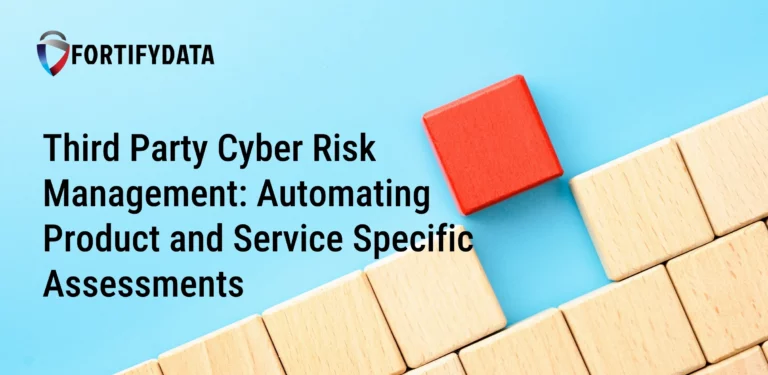
Third Party Cyber Risk Management: Automating Product and Service Specific Assessments Digital transformation and an inter-connected supply chain that…
"This is an excellent starting point for any organization that wants to get serious about their cyber risk management. The system has the capability to grow as you become more sophisticated in your use"
IT Director
Services Industry
The growing reliance on third-party software and apps, plus a more interconnected supply chain means that organizations need to better manage their vendor risks, and automation can play a key role in the third-party cyber risk management process. The industry is ready for a more scalable and accurate method to assess their vendors.
Many companies had (or have) a process that involves a manual questionnaire assessment, relying on yet another 3rd party’s “score” of a vendor, or some imperfect combination of the two. Both of those methods each have their own inefficiencies and inaccuracies – some would call them broken – yet the industry has accepted a “that’s good enough” mentality leaving many to deal with deficiencies in this process. We see it differently.

By taking an innovative approach to bring efficiencies of automation by incorporating the findings from a direct assessment of a third-party and marrying that up to the applicable questions, known as auto-validation of questionnaires, enterprises can enjoy the benefits of automating those methods.
Our continuous threat exposure management approach involves the direct assessment of a third-party’s external assets since this will match what any threat actor will obtain too, and one of the main areas of concern in a vendor evaluation. The assessment findings are shared with any vendor and help foster a collaborative discussion on the threats associated with the findings, since both parties are “on the same page”. Done continuously this provides both parties – the enterprise and the vendor – accurate risk intelligence based on new CVEs, changes to assets, and cyber threat intelligence.
But just obtaining external vulnerabilities on assets is only part of the equation. This information can be married to any questionnaire (and the applicable questions) so that the findings data is an auto-validating component to the provided vendor responses. The continuous assessment and interrogation between the findings and the questionnaire give you an always up-to-date view of the risks a third-party represents.
In addition to these benefits, leveraging direct assessments and incorporating them with questionnaires gives you the best of both methods that provides a workable solution to evaluate vendor relationships at scale, with accuracy.
Automating the assessment and questionnaire validation components of third-party cyber risk management can also help companies to improve their relationships with their third-party vendors and partners. Companies can demonstrate to their vendors and partners that they are committed to protecting their assets and reputation, and that they take cyber risk management seriously helping to build trust and foster stronger relationships with third party vendors and partners, which is beneficial for both parties.



| Cookie | Duration | Description |
|---|---|---|
| cookielawinfo-checkbox-analytics | 11 months | This cookie is set by GDPR Cookie Consent plugin. The cookie is used to store the user consent for the cookies in the category "Analytics". |
| cookielawinfo-checkbox-functional | 11 months | The cookie is set by GDPR cookie consent to record the user consent for the cookies in the category "Functional". |
| cookielawinfo-checkbox-necessary | 11 months | This cookie is set by GDPR Cookie Consent plugin. The cookies is used to store the user consent for the cookies in the category "Necessary". |
| cookielawinfo-checkbox-others | 11 months | This cookie is set by GDPR Cookie Consent plugin. The cookie is used to store the user consent for the cookies in the category "Other. |
| cookielawinfo-checkbox-performance | 11 months | This cookie is set by GDPR Cookie Consent plugin. The cookie is used to store the user consent for the cookies in the category "Performance". |
| viewed_cookie_policy | 11 months | The cookie is set by the GDPR Cookie Consent plugin and is used to store whether or not user has consented to the use of cookies. It does not store any personal data. |